Pixel 4 vs. OnePlus 7T: Which is the better Android phone?
Can Google's camera outshine the 7T's value?
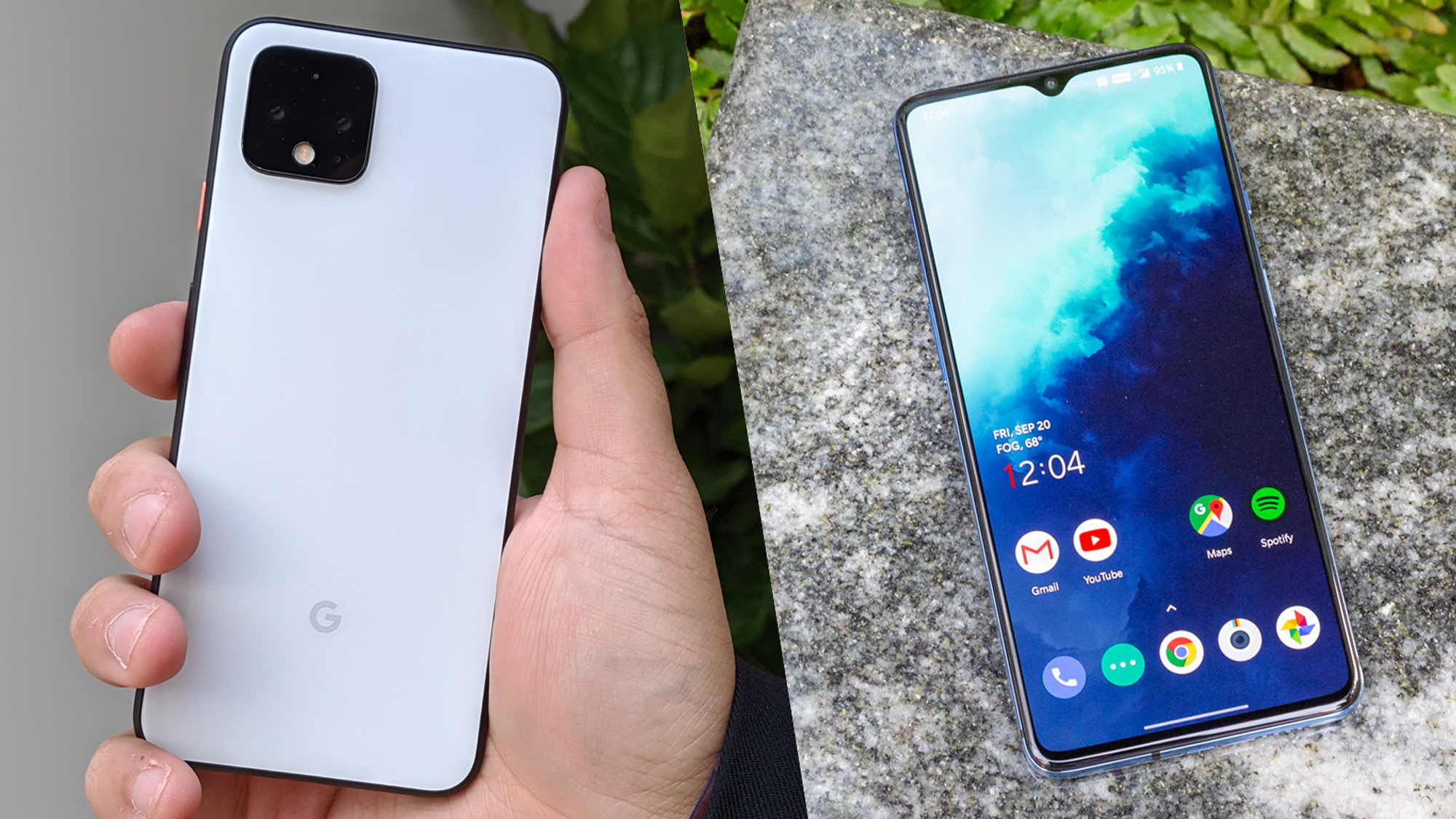
Updated, Nov. 15: We've added photo comparisons and final scores for our Pixel 4 vs. OnePlus 7T face-off.
Since debuting in 2016, Google's Pixel phones have tried to make their case as the go-to device for Android fans. But it's been a challenge for the company to establish its Pixel as the best Android phone. Not only does Google have to compete against flagships from established players like Samsung for smartphone supremacy, it's also being challenged by up-and-comers like OnePlus, with its lineup of more affordable phones promising premium features.
That scenario is playing out again with the Pixel 4, Google's latest phone. While Google can point to the pure Android experience, improved photos and built-in smarts of the Pixel 4, it's still got to make the case that its latest handset is a better value than the less-expensive OnePlus 7T, and its array of impressive features.
Can the Pixel 4 surpass the OnePlus 7T, which we think is the best smartphone value available right now? Now that we've had a chance to fully test Google's new phone, we can offer our verdict on how the Pixel 4 and OnePlus 7T compare.
Pixel 4 vs. OnePlus 7T: The specs
| Row 0 - Cell 0 | Pixel 4 | Pixel 4 XL | OnePlus 7T |
| Starting Price | $799 | $899 | $599 |
| Display (Resolution) | 5.7-inch AMOLED (2280 x 1080) | 6.3-inch AMOLED (3040 x 1440) | 6.55-inch AMOLED (2400 x 1080) |
| CPU | Snapdragon 855 | Snapdragon 855 | Snapdragon 855 Plus |
| Memory | 6GB | 6GB | 8GB |
| Storage | 64GB, 128GB | 64GB, 128GB | 64GB, 128GB |
| MicroSD? | None | None | None |
| Rear Cameras | 12.2-MP main (f/1.7), 16-MP telephoto (f/2.4) | 12.2-MP main (f/1.7), 16-MP telephoto (f/2.4) | 48-MP main (f/1.6), 16-MP ultrawide (f/2.2), 12-MP telephoto (f/2.2) |
| Front Camera | 8-MP | 8-MP | 16-MP |
| Battery Size | 2,800 mAh | 3,700 mAh | 3,800 mAh |
| Battery Life (Hrs:Mins) | 8:03 | 9:42 | 8:47 |
| Water Resistance Rating | IP68 | IP68 | Not rated |
| Size | 5.7 x 2.7 x 0.3 inches | 6.3 x 2.9 x 0.3 inches | 6.3 x 2.9 x 0.3 inches |
| Weight | 5.7 ounces | 6.8 ounces | 6.7 ounces |
| Colors | Clearly White, Just Black, Oh So Orange | Clearly White, Just Black, Oh So Orange | Frosted Silver, Glacier Blue |
Pixel 4 vs. OnePlus 7T: Design
The OnePlus 7T's a tall phone. At 6.3 x 2.9 x 0.3 inches, it's about as large as Google's supersized Pixel 4 XL. The Pixel 4 looks downright compact compared with the 7T, with its 5.7 x 2.7 x 0.3-inch dimensions. Google's smaller phone is certainly easier to use with one hand.
Still, the 7T makes a striking impression overall, thanks to its Glacier Blue color scheme and 3D glass back that employs a matte effect, which makes OnePlus' phone easy to hold on to. (You can also get a Frosted Silver 7T, though it's not as eye-catching in our opinion.) The Pixel 4 only opts for a matte texture on its Clearly White and Oh So Orange models, while the Just Black version of Google's phone offers a glossy, mirrored finish.

The most noticeable difference between the two phones is how they choose to house the front cameras. The OnePlus 7T opts for a teardrop-style notch that dips down into the display, but allows OnePlus to squeeze in extra screen real estate. Both the Pixel 4 and 4 XL feature an old-school bezel on the top of the phone, which contains not only the front-facing camera but all the sensors needed to support the phone's Motion Sense feature (which we'll discuss in detail below). However you feel about notches, the 7T's look is more in line with current smartphones.
Get instant access to breaking news, the hottest reviews, great deals and helpful tips.
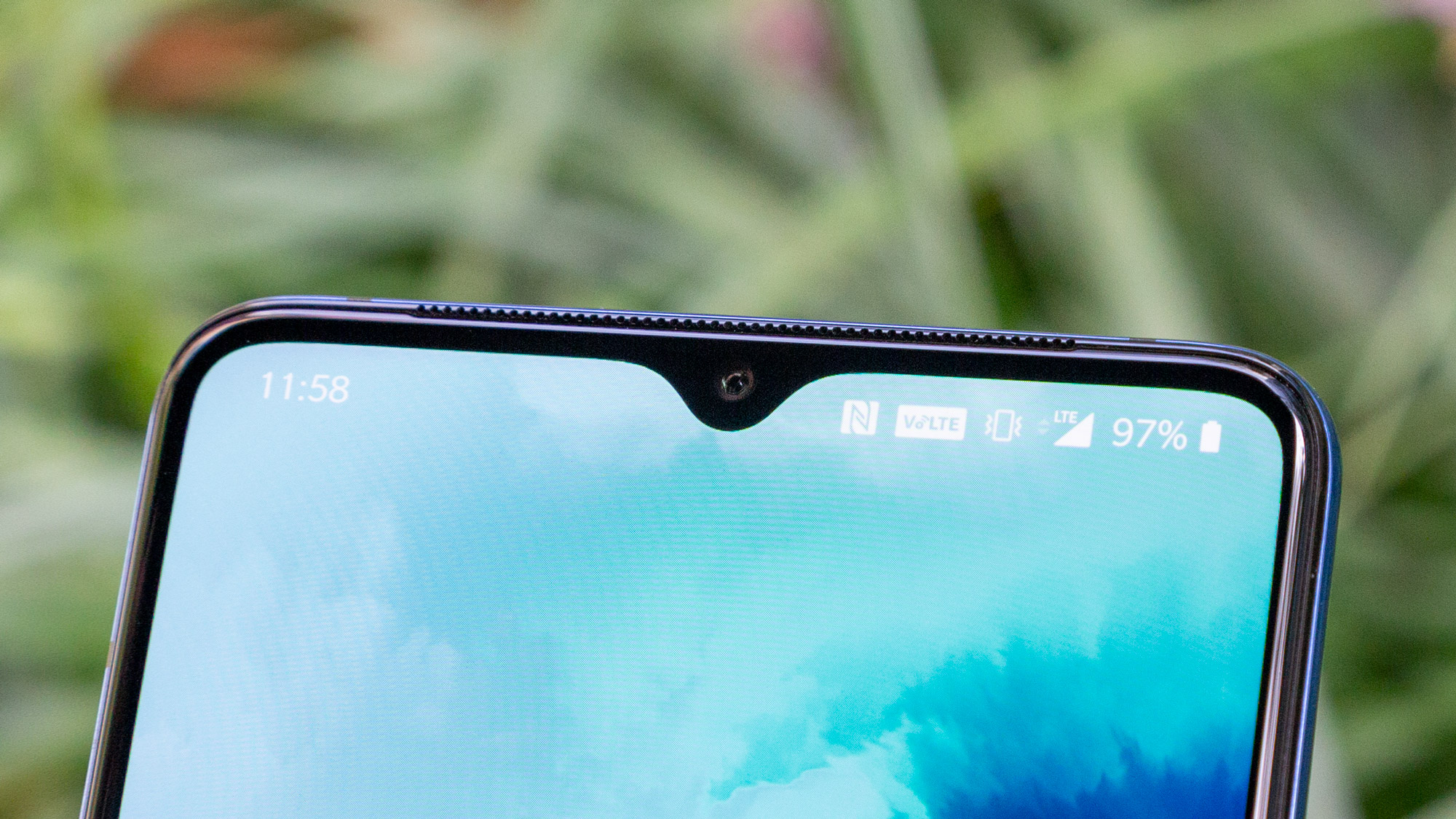
Flip the phone over, and you get a battle of the distracting camera arrays. The 7T houses its three rear cameras in a circular hump so prominent, it's hard to look anywhere else. The Pixel 4's cameras are housed in a square box that takes up less space but isn't any less noticeable. Don't expect a sleek look from either phone.
The Pixel 4 boasts an IP68 water resistance rating, so you can drop it in up to 5 feet of water for 30 minutes and not have to sweat lasting damage. OnePlus says its phone is water resistance, but there's no IP rating on the 7T to give you that extra boost of confidence.
Winner: Pixel 4
Pixel 4 vs. OnePlus 7T: Display
With Google's phones, you get a choice in screen sizes — a 5.7-inch AMOLED panel with the $799 Pixel 4 or a larger 6.3-inch display for $100 more with the Pixel 4 XL. There's only one screen size for the OnePlus 7T, which uses a 6.55-inch AMOLED panel.
The OnePlus 7T is a pretty be a formidable competitor when it comes to colors. OnePlus' phone covers 155.1% of the sRGB color spectrum when set to its default Vivid Color profile. Those colors are accurate, too, as we measured a Delta-E rating of 0.27 for the OnePlus 7T. (The closer to zero, the more accurate the colors.) Neither the Pixel 4 (130.1%) nor the Pixel 4 XL (131.7%) can match the OnePlus 7T for producing colors, but the larger Pixel recreates them more accurately with a Delta-E rating of 0.26. The regular Pixel 4's Delta-E score of 0.34 is slightly worse than the OnePlus 7T's.
None of these phones are particularly bright. We measured the OnePlus 7T at 474 nits with a light meter, which is a little dim. But it's a positive light show compared to the Pixel 4 (429 nits) and Pixel 4 XL (418 nits).
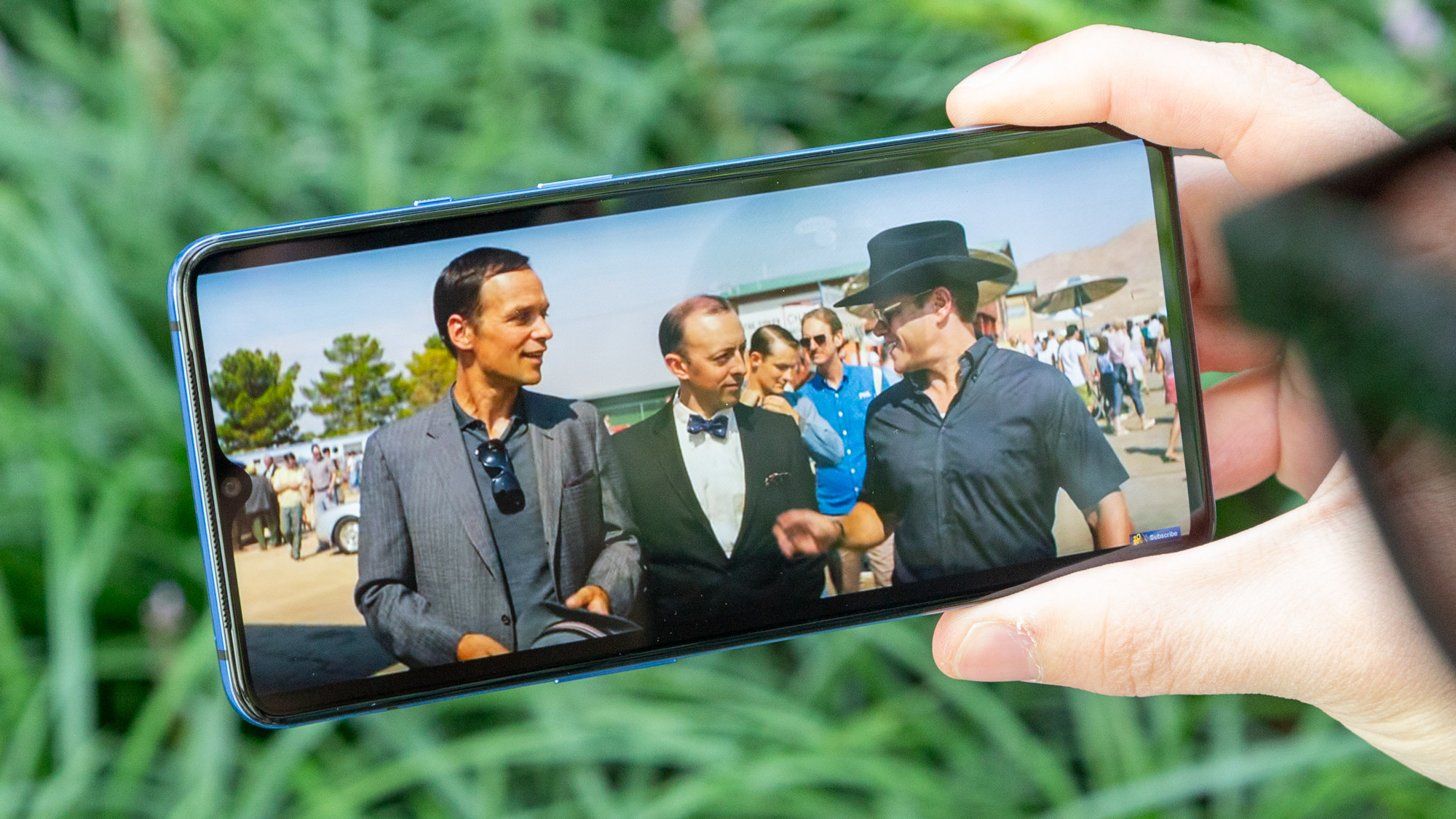
The real standout display feature for both phones is a 90-Hz refresh rate, which makes for smoother scrolling, better gaming and more immersive experiences. The OnePlus 7T was one of the few phones to offer a 90-Hz refresh rate until the Pixel 4 came along, and Google outdid OnePlus by making the feature dynamic. The Pixel 4 will adjust its refresh rate depending on what you're using the phone to do, saving your battery life by switching to a lower refresh rate when the phone's screen is static.
One downside to the Pixel 4's 90-Hz refresh rate — if you dimmed the screen below 80%, the feature was initially disabled to conserve power. The idea behind it makes sense: you're unlikely to notice the benefits of a faster refresh rate on a dimmer screen, but Google never really publicized this limitation. A software update addressed that complaint.
Winner: OnePlus 7T
Pixel 4 vs. OnePlus 7T: Cameras
Given the Pixel's reputation as the phone to get when all you want to do is snap photos, there's going to be a lot of attention paid to the Pixel 4's photographic prowess. That's especially true now that Google has broken with tradition and added a second lens to the back of its phone. In addition to a 12.2-MP main shooter, the Pixel 4 offers a 16-MP telephoto lens capable of offering a 2x optical zoom. Throw in Google's Super Res Zoom technology, which uses computational photography to clean up optically zoomed photos, and you can zoom even farther.
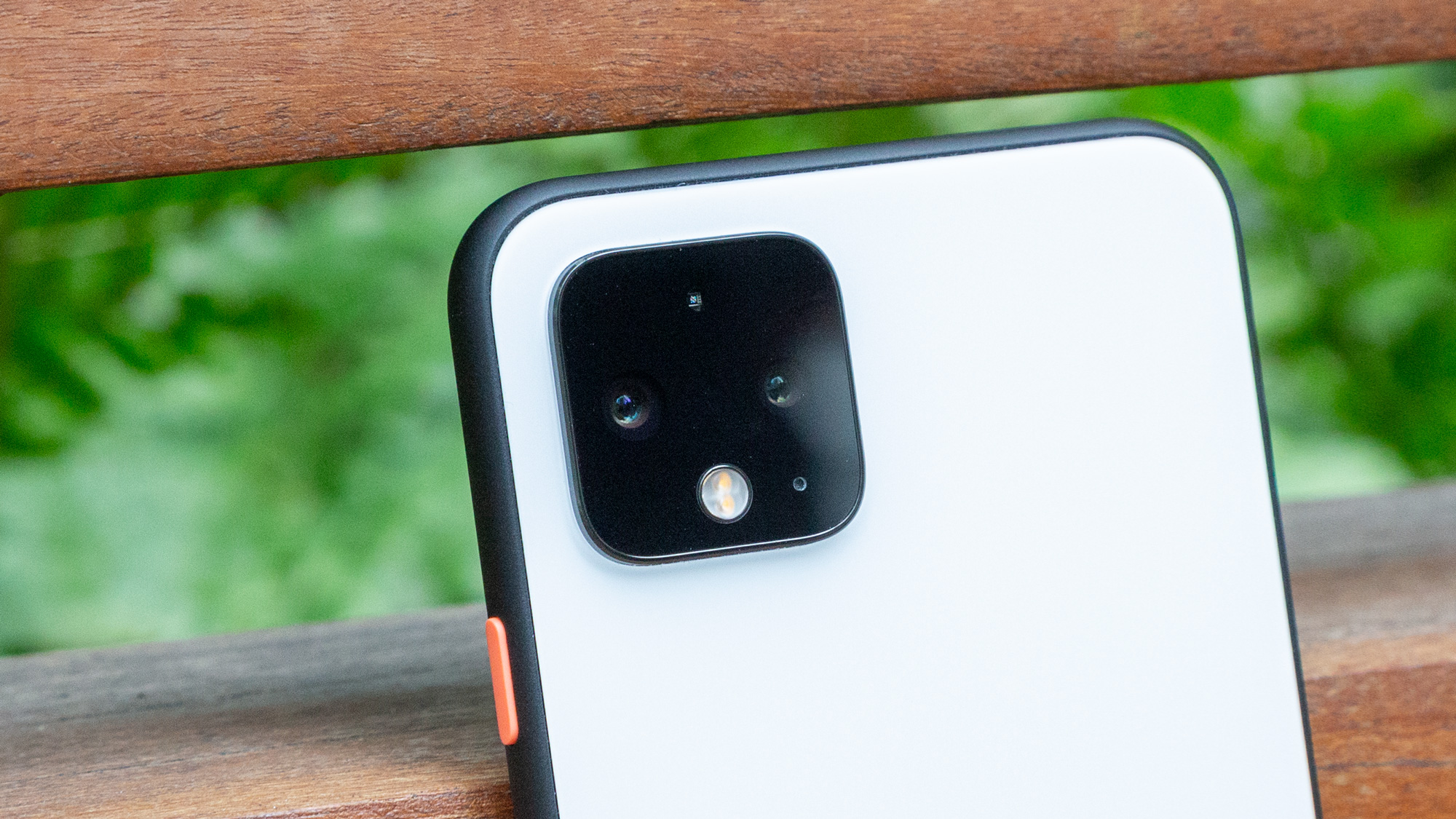
Super Res Zoom isn't the only software-powered feature you'll find with the Pixel 4's cameras. Night Sight, which helps you take clear photos even when the lights are low, is back and beefed up enough to where the Pixel 4 can now take pictures in the night sky. The high dynamic range (HDR+) capabilities on the phone are new and improved, too — you can turn to dual exposure controls to adjust brightness and shadows on shots, while a Live HDR+ feature shows you how your photos will look in the viewfinder before you've even snapped a shot. The Pixel 4 also uses machine learning to boost its white balance, which Google says will lead to more accurate colors even when the lighting is challenging.
The OnePlus 7T takes all that on with a trio of rear cameras. In addition to the the 48-MP main sensor, the 7T sports a 16-MP ultrawide lens with a 117-degree field of view and a 12-MP telephoto lens to support a 2x optical zoom. There's software smarts at play here, too: the OnePlus 7T has a night mode of its own that's been improved from past OnePlus models, and we're particularly impressed by the 7T's Macro Mode for shooting objects up close without the bothersome blur that can result when you move in on your subject.

Up front, the Pixel 4 gets rid of the dual selfie camera that characterized the Pixel 3 lineup for a single 8-MP lens. The OnePlus 7T has a 16-MP front camera, housed in that teardrop notch.
You can see how much better the Pixel 4 is at handling challenging lighting when you compare these shots taken in a New York restaurant. The color is more balanced in the Pixel 4's shot, and Google's phone even manages to faithful recreate the blue glow from the bar in the background. The OnePlus 7T's shot is overly saturated with a strong yellow cast to everything. It's a more vibrant picture than what the Pixel 4 has to offer, but the OnePlus 7T goes overboard in brightening the scene.
The OnePlus 7T fares much better when we move to Grand Central Station, reproducing less garish colors with a much color cast. It struggles a little bit with the light streaming in from the back window, but manages to keep any over-exposure in check. That said, the brighter image captured by the Pixel 4 looks better to my eye. It more accurately reflects the light, and the brightness produces a good contrast with some of the shadows in the archways on both sides of the picture. The textures and patterns of the wall really stand out in the Pixel 4's effort in a way that they don't on the OnePlus 7T.
Zooming in on the clock within Grand Central Station, we see the benefits of the Pixel 4's telephoto lens and its Super Res Zoom feature. The numbers on the clock come in crystal clear, and the Pixel 4 once again does a better job reproducing colors — the OnePlus 7T rendering things a little too warmly. That said, the Pixel 4's shot isn't perfect — it allows more glare from the background windows, and there's a flare at the bottom of the Pixel 4's photo that's not as noticeable as the OnePlus 7T's shot.
Heading outside once the lights were low, we got a good look at how well the Nightscape mode on the OnePlus 7T measures up to the Pixel 4's vaunted Night Sight feature. The Pixel 4's shot isn't bad, but it lacks the detail that the 7T captured. You can read the Budweiser sign over the bar's door and the Bar & Grill letter on the canopy is more legible in the 7T's shot, too. An argument could be made that the OnePlus 7T sheds a bit too much light on the scene, and the Pixel 4's shot at least makes it clear that this is a nighttime photo, but if you want more details, the OnePlus 7T's effort is the photo to pick.
The Pixel 4 reasserts its superiority when we take some portraits with both phones. The OnePlus 7T's shot of our colleague Rami is all right, but the back ground blur effect isn't as dramatic, and the color is a touch warm. Because the Pixel 4 does a more thorough blur, Rami stands out a bit more from his background for a better-composed shot. Both cameras overly smooth his skin, but the effect is more pronounced on the 7T.
Winner: Pixel 4
Pixel 4 vs. OnePlus 7T: Performance
Ahead of our testing, logic dictated that the Pixel 4 wasn't going to keep pace with the OnePlus 7T. Sure, Google's phone uses the Snapdragon 855 processor, which powers most top-of-the-line Android phones these days. But OnePlus 7T takes a step up with the Snapdragon 855 Plus.
The differences are slight but still noteworthy between these two Qualcomm chipsets. The Snapdragon 855 Plus has a faster prime core than the standard 855, which offers a 4.2% uplift in single-thread applications based on Qualcomm's numbers. The GPU gets a bigger boost, with a 15% jump in rendering speed. These improvements mean a phone with a Snapdragon 855 Plus processor is better equipped to handle graphics and processor-intensive apps.
That boost was evident when we ran Geekbench 5, which measures overall performance. The Pixel 4 and Pixel 4 XL posted scores of 2,329 and 2,582, respectively. Those are decent numbers for an Android phone, but they don't come close to the OnePlus 7T's 2,759 result.
Graphics tests produced a similar story. GFXBench's Aztec Ruins OpenGL test for high-tier phones produced a result of 1,169 frames for the OnePlus 7T and 1,061 for the Pixel 4 XL.
That doesn't mean the Pixel 4 is pokey by any means, and Google's phones benefit from a Pixel Neural Core that speeds up tasks involving machine-learning. But for everyday tasks, it's hard to overlook the benefits of the Snapdragon 855 Plus inside the OnePlus 7T.
Winner: OnePlus 7T
Pixel 4 vs. OnePlus 7T software and special features
Normally, this is an area where Google's phones would have an edge over any other Android handset. The Pixel always ships with the latest version of Android, and it's first in line for updates.
That last part remains true, but the Pixel 4 wasn't the only device shipping with Android 10 this October. The OnePlus 7T is running a new version of OxygenOS based on Android 10. And we think OnePlus' approach to both gesture-based navigation is a little more intuitive than what Android 10 offers. What's more, OnePlus extends Smart Replies in notification beyond just Google's chat app to include all messaging apps.
The OnePlus 7T also boasts a very fast in-display fingerprint sensor that performed well in our testing. Still, it's hard to top the ability to unlock your phone with your face, and that's what the Pixel 4 offers. In fact, Google claims its Motion Sense-powered face unlock feature is faster than Apple's Face ID — something that proved true in our testing.
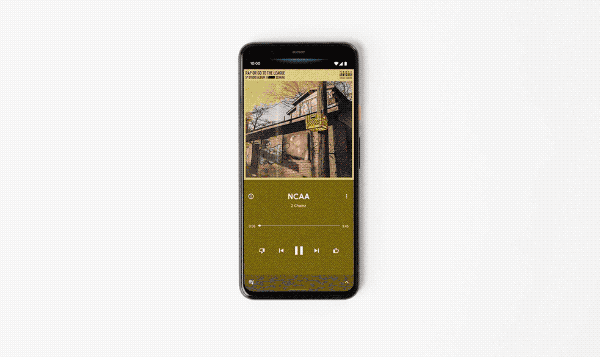
Motion Sense doesn't just let you unlock your phone quickly. It also lets you control music playback, turn off alarms and dismiss phones all without touching the Pixel 4; instead, you use gestures to control the phone. Motion Sense worked well in our hands-on time with the phone, though it's fairly limited at this point.
The Pixel 4's built-in smarts are what ultimately tip the scales toward Google's phone. Google says its voice-powered assistant is more tightly intertwined with the Pixel 4 so it's easier to rattle off a string of commands at the Google Assistant. A new built-in Recorder app is even more impressive with its ability to transcribe your recordings in real time. And all this takes place on the Pixel itself, with none of your recordings or requests finding their way to Google's servers.
Winner: Pixel 4
Pixel 4 vs. OnePlus 7T: Battery life and charging
Battery life proved to be one area where neither the Pixel 4 nor the OnePlus 7T stand out. Google did very little to improve how long its phones can last after the Pixel 3 models produced disappointing results in our battery test, which involves continuous web surfing over T-Mobile's LTE network until the phone runs out of juice.
For the Pixel 4, Google actually shrank the phone's battery down to 2,800 mAh (the Pixel 3 had a 2,915 mAh battery), and as you might expect, the Pixel 4 barely held out for 8 hours on our test. The Pixel 4 XL, which has a larger battery, improved on the Pixel 3 XL's time, but only by a few minutes — it lasted 9 hours, 42 minutes, which is slightly below average for a smartphone these days.

The trouble is, the OnePlus 7T isn't any better. OnePlus' new phone lasted just 8 hours and 47 minutes on our battery test despite its 3,800 mAh battery. So if you want a long-lasting phone out of this trio, get the Pixel 4 XL.
The OnePlus 7T can re-charge quickly, thanks to OnePlus' Warp Charge 30T protocol, which uses software enhancements to speed up the phone maker's already speedy fast-charging feature. Our 7T got up to a 61% charge after 30 minutes when we plugged the drained phone into the stock adapter. The Pixel 4 supports fast-charging, but it's 18-watt fast charging versus 30 watts for the 7T. As a result, the Pixel 4 XL got up to a 43% charge after half-an-hour.
You can wirelessly charge Google's phone, though — something that isn't supported by any OnePlus handset.
Winner: Pixel 4
Pixel 4 vs. OnePlus 7T: Price and availability
The OnePlus 7T definitely has the Pixel 4 beat on price, costing $599 to the Pixel 4's starting price of $799. And you get 128GB with the OnePlus 7T, versus 64GB on the entry-level Pixel 4. To match the 7T's capacity, you'd have to pay an extra $100 for the 128GB Pixel 4, bringing your cost to $899. Check out our pages for Pixel 4 offers and OnePlus 7T deals.
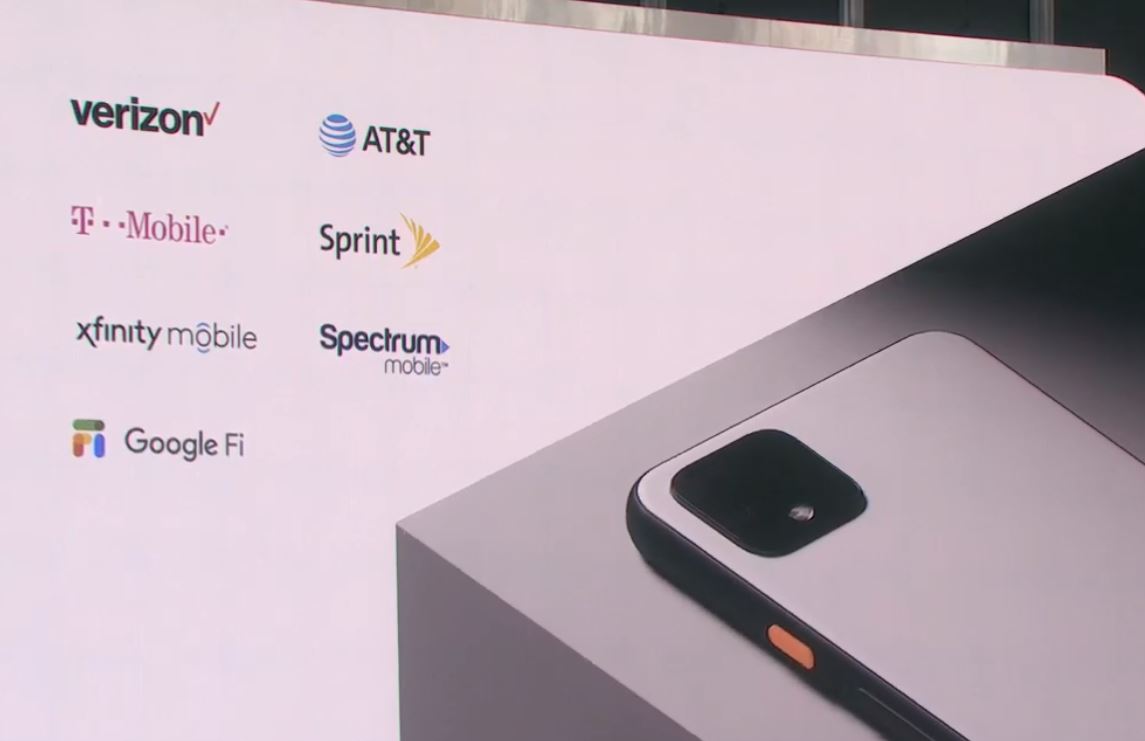
The Pixel 4 is more widely available, though, as you can get it from every major U.S. carrier as well as from discount carriers like Visible, regional carriers like U.S. Cellular and cable company-backed wireless services like Xfinity Mobile and Spectrum Mobile. OnePlus has lined up a single carrier partner, T-Mobile.
More significantly, you can use the Pixel 4 on any cellular network, be it GSM- or CDMA-based. An unlocked OnePlus 7T will work just fine on GSM networks like the ones T-Mobile and AT&T operate, but if you want to use it on Verizon, you need to contact the carrier to set up the phone to use only Verizon's LTE network.
Winner: OnePlus 7T
The Winner: Pixel 4
The contest between the Pixel 4 vs. the OnePlus 7T is closer than you might think, given Google's reputation for producing superior camera phones. The Pixel 4's camera still helps it win the day — it's one of the best camera phones out there, after all — but the OnePlus 7T has enough going for it to give Google's phone a run for its money.
| Row 0 - Cell 0 | Pixel 4 | OnePlus 7T |
| Design (10 points) | 7 | 6 |
| Display (15 points) | 11 | 12 |
| Cameras (20 points) | 18 | 15 |
| Performance (15 points) | 12 | 13 |
| Software (10 points) | 9 | 8 |
| Battery Life (20 points) | 14 | 13 |
| Price & Availability (10 points) | 7 | 8 |
| Overall (100 points) | 78 | 75 |
Let's start with money, because the OnePlus 7T costs much less than the Pixel 4 and gives you more storage to boot. It's got a better-performing processor and it can match one of the Pixel 4's standout features — a screen with a faster refresh rate.
But the 7T's edge in these categories isn't that great, especially when you consider that the Pixel 4 is more widely available and works on the networks of more carriers. Throw in Google's software smarts — that Recorder app is very impressive — and Android fans should ultimately opt for the Pixel 4.
Philip Michaels is a Managing Editor at Tom's Guide. He's been covering personal technology since 1999 and was in the building when Steve Jobs showed off the iPhone for the first time. He's been evaluating smartphones since that first iPhone debuted in 2007, and he's been following phone carriers and smartphone plans since 2015. He has strong opinions about Apple, the Oakland Athletics, old movies and proper butchery techniques. Follow him at @PhilipMichaels.

